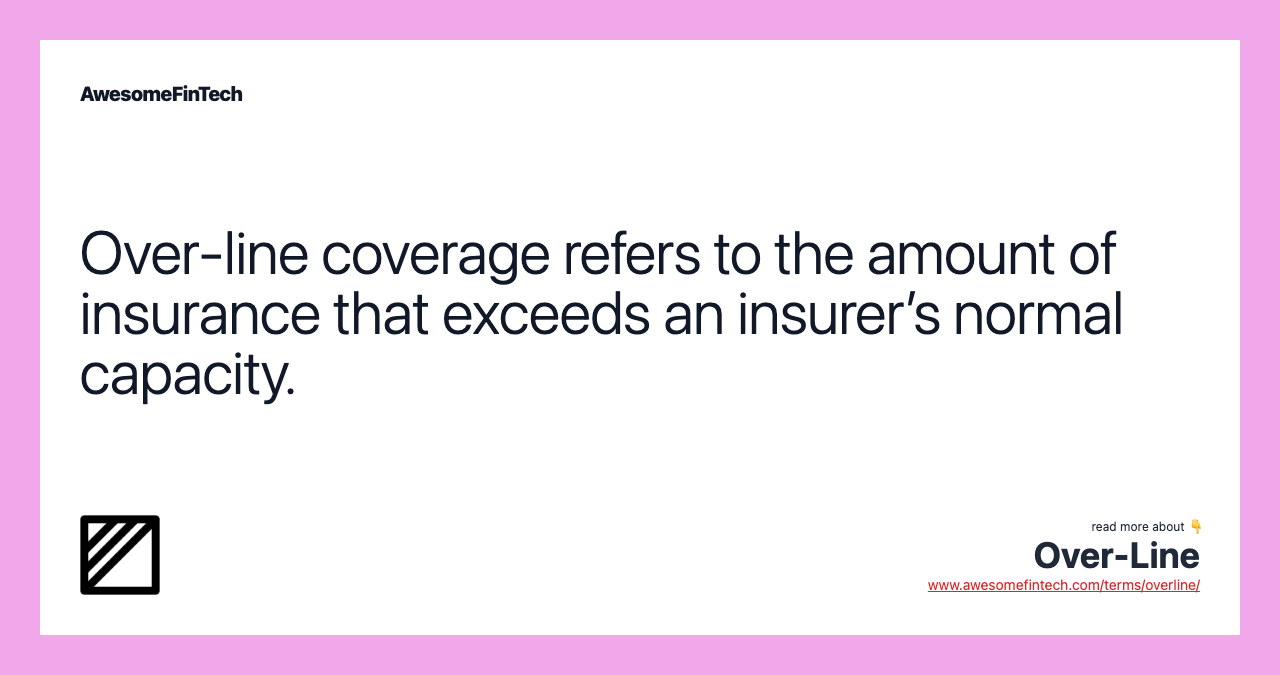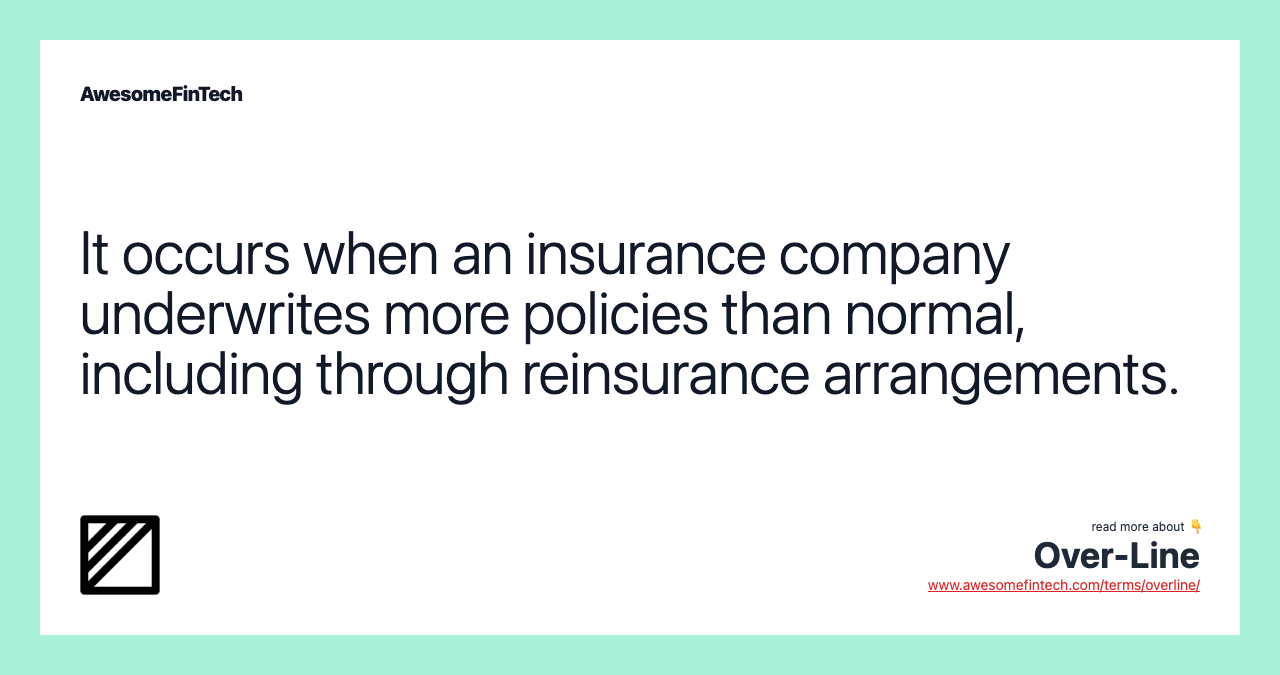Over-Line
In the insurance industry, the term “over-line” refers to the portion of an insurance company’s coverage that exceeds the normal amount of coverage that they provide. An insurer with excess capacity can underwrite new policies, and thus bring in more premiums. In addition to providing insurance to individual customers, insurance companies also provide insurance to one another through reinsurance contracts. This excess level of coverage is referred to as the firm’s “over-line.” State insurance regulators pay close attention to the amount of liability that insurance companies take on through their underwriting activities. For example, if Insurer A has excess capacity — that is, more money than it needs in order to cover its existing liabilities — it can use that capacity to sell additional insurance coverage, such as by selling reinsurance to Insurer B. In the insurance industry, the term “over-line” refers to the portion of an insurance company’s coverage that exceeds the normal amount of coverage that they provide.

What Is an Over-Line?
In the insurance industry, the term “over-line” refers to the portion of an insurance company’s coverage that exceeds the normal amount of coverage that they provide. Over-line coverage can occur when an insurer underwrites more policies than normal, or when a reinsurer accepts a larger amount of liabilities through a reinsurance contract than is typical for that firm.



How Over-Lines Work
Insurance companies make money by collecting premiums in exchange for indemnifying their customers against certain risks. Of course, in order to insure these risks, insurance companies must ensure that they have sufficient financial capacity to do so. The amount of capacity an insurer has depends on its financial strength and excess capital, or funds not currently used to cover policy-related liabilities. An insurer with excess capacity can underwrite new policies, and thus bring in more premiums.
In addition to providing insurance to individual customers, insurance companies also provide insurance to one another through reinsurance contracts. For example, if Insurer A has excess capacity — that is, more money than it needs in order to cover its existing liabilities — it can use that capacity to sell additional insurance coverage, such as by selling reinsurance to Insurer B. At times, this can lead insurers to have covered a larger overall amount than is typical for their operations. This excess level of coverage is referred to as the firm’s “over-line.”
State insurance regulators pay close attention to the amount of liability that insurance companies take on through their underwriting activities. Insurers are required to report their financial position to state regulators, who use these reports to determine whether an insurer is in good financial health or if there is a risk of insolvency. For this reason, companies with significant levels of over-line coverage might attract scrutiny from insurance regulators, who may wonder whether the insurer has assumed responsibility for an unsustainable level of risk.
Example of an Over-Line
Emma is the manager of an insurance company. Looking over her company’s financial metrics, she notes that her firm’s financial performance has been unusually strong in the past 12 months, leading to an excess of cash reserves. She estimates that, if the claims on her existing contracts play out in line with projections, she will be left with roughly 20% excess capacity.
To deploy this capital and improve her bottom line, Emma decides to take on reinsurance contracts, accepting the risk held by other insurers in exchange for additional premiums. Although Emma believes that her new contracts are likely to be both profitable and safe, the additional reinsurance contracts raise her firm’s overall coverage level above its historical average. For this reason, it is possible that the new over-line coverage level will attract the attention of the state insurance regulator, requiring Emma to explain the change and demonstrate that the new policies are financially sound.
Related terms:
Aggregate Extension Clause (AEC)
An aggregate extension clause in a reinsurance contract allows a number of related small business losses to be filed as a single claim. read more
Catastrophe Excess Reinsurance Defintiion
Catastrophe excess reinsurance is a policy that protects a catastrophe insurance company from insolvency following a disaster. read more
Indemnity
Indemnity is compensation for damages or loss. When it is used in the legal sense, indemnity may also refer to an exemption from liability for damages. read more
Insolvency
Insolvency is a situation in which an individual or company cannot pay off bills and debts. read more
Insurance Premium
An insurance premium is the amount of money an individual or business pays for an insurance policy. read more
Quota Share Treaty
A quota share treaty is a pro rata reinsurance contract in which the insurer and reinsurer share premiums and losses according to a fixed percentage. read more
What Is a Recapture Provision?
A recapture provision is a clause that permits the ceding party in a contract to take back some or all of the risk originally ceded to the reinsurer. read more
Surplus Share Treaty
A surplus share treaty is reinsurance in which the ceding insurer retains a fixed amount of liability and the reinsurer takes the remaining liability. read more
Underwriting Capacity
Underwriting capacity is the maximum amount of liability that an insurance company agrees to assume from its underwriting activities. read more
Underwriting
Underwriting—financing or guaranteeing—is the process through which an individual or institution takes on financial risk for a fee. read more